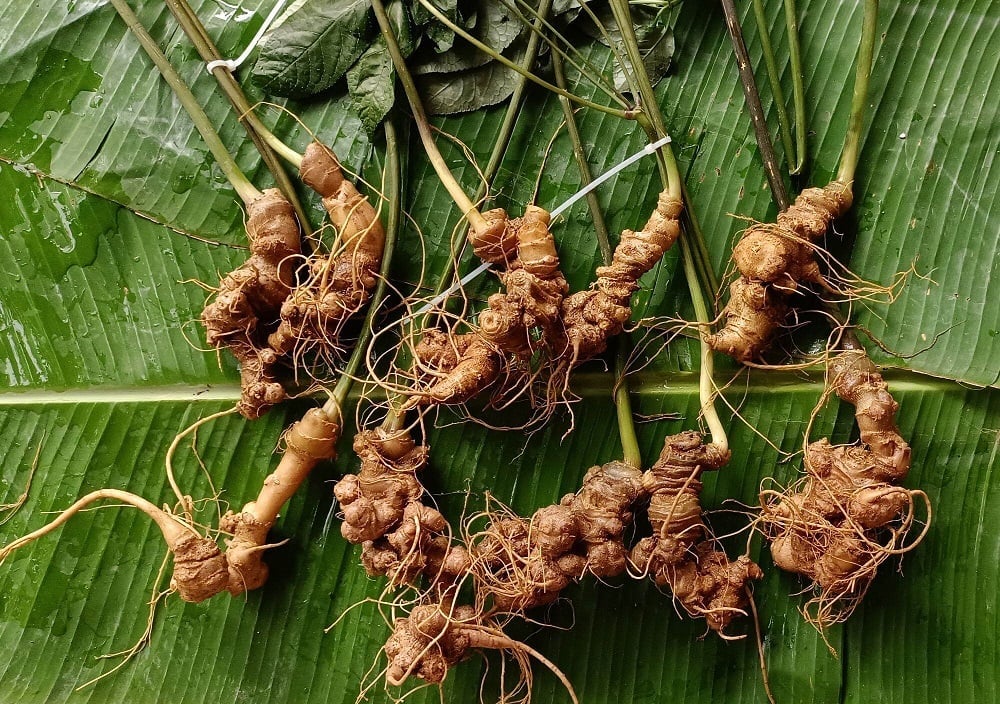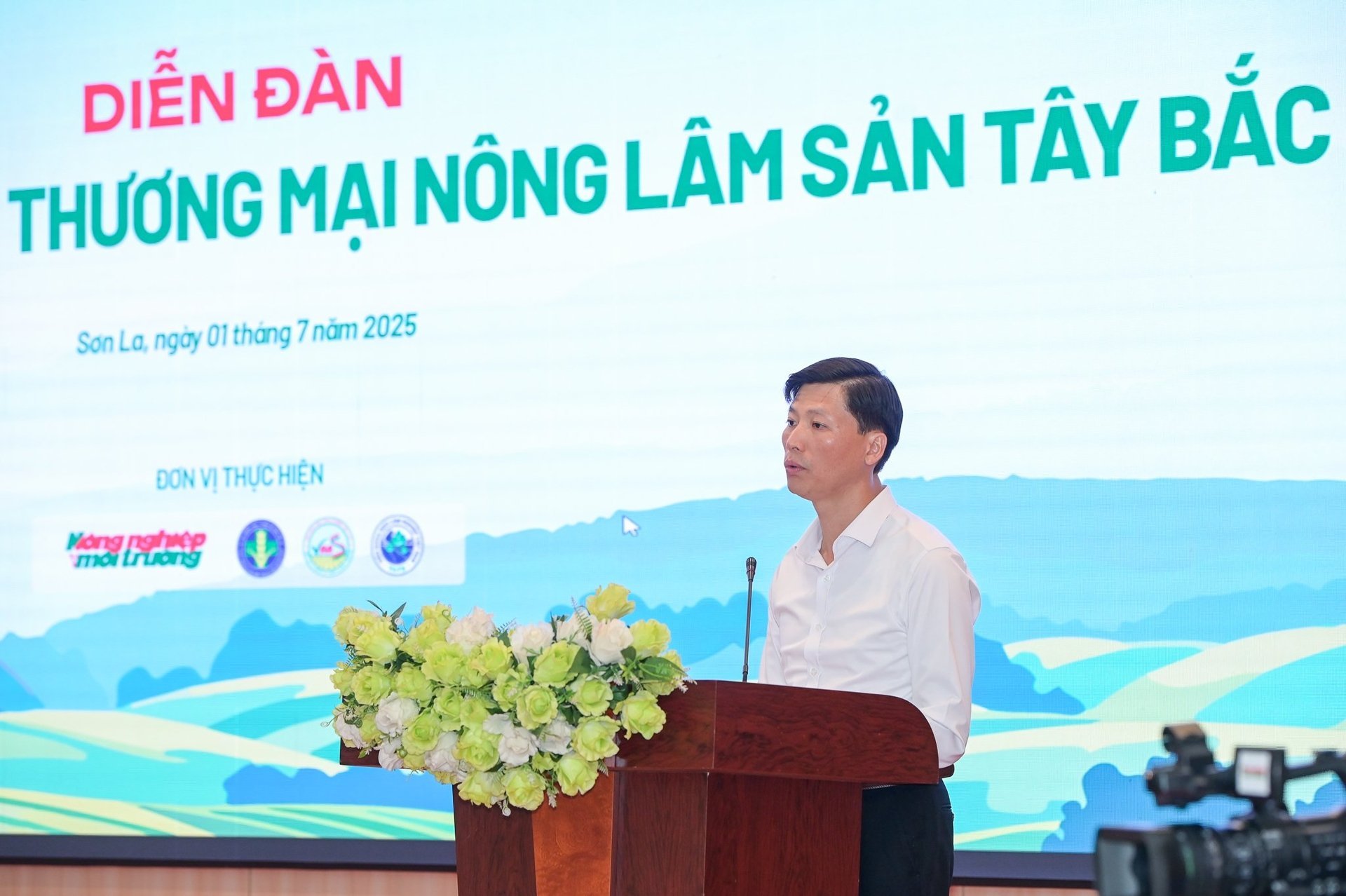November 23, 2025 | 10:58 GMT +7
November 23, 2025 | 10:58 GMT +7
Hotline: 0913.378.918
November 23, 2025 | 10:58 GMT +7
Hotline: 0913.378.918
Lai Chau is one of the most promising localities in Vietnam for the development of valuable medicinal plants. With its year-round cool climate, diverse mountainous terrain, and rich primary forest ecosystem, the province currently boasts over 23,000 hectares of medicinal crop cultivation. Key species include cinnamon (over 10,000 ha), cardamom (over 6,500 ha), amomum (over 2,500 ha), hawthorn (over 2,000 ha), along with rare, high-value plants such as Paris polyphylla (over 10 ha) and, most notably, Lai Chau ginseng (over 130 ha). The province’s annual medicinal output is estimated at around 3,000 tonnes, underscoring its immense potential in the herbal medicine industry.

Lai Chau ginseng is a native, endemic plant with a narrow distribution in Lai Chau province. It has been used as medicine by local people for a long time.
Among the various local medicinal species, Lai Chau ginseng stands out as a symbol of potential worthy of serious investment. This endemic species grows only in a few highland districts such as Muong Te, Tam Duong, and Sin Ho. Locals have traditionally used it as a medicinal herb known as black notoginseng or red notoginseng. In 2013, a research team led by Phan Ke Long officially discovered and described the plant, naming it Lai Chau ginseng. Since then, the province has made continuous efforts to develop this precious plant.
However, expanding production and integrating Lai Chau ginseng into a full value chain for cultivation, processing, and export faces several institutional and technical hurdles. At a recent forum on connecting production and trade of highland medicinal plants, Mr. Bui Huy Phuong, Director of the Department of Agriculture and Environment of Lai Chau, reported that since early 2022, authorities have handled 40 violations related to medicinal plants. These include 37 administrative cases with over 700 kg of ginseng (including roots, stems, and leaves) confiscated, and 3 criminal cases involving an additional 300 kg seized. These figures reflect not only the demand but also the challenges posed by unregulated exploitation, pointing to the urgent need for a more effective regulatory framework.
One of the most pressing issues, according to Mr. Phuong, lies in the complexities of obtaining planting codes for ginseng as stipulated by Decree No. 06 and Decree No. 84. The current procedures are cumbersome and ill-suited to local production conditions, creating difficulties for both local authorities and ginseng producers. He urged that this bottleneck be resolved promptly to facilitate transparent and efficient cultivation and processing activities.

Mr. Bui Huy Phuong, Director of the Department of Agriculture and Environment of Lai Chau. Photo: Tung Dinh.
In addition, Lai Chau called for the creation of special policies tailored specifically to the development of Vietnamese ginseng, including Lai Chau ginseng. The goal is to establish a conducive regulatory corridor that attracts investment and promotes deep processing and export of these high-value herbs. The province also hopes to receive support from research institutions and scientists to advance technologies such as rapid propagation via tissue culture, pest and disease control using modern techniques, and the development of standardized production protocols from cultivation to harvest.
Further, in-depth studies on the chemical composition, active ingredients, and medicinal properties of Lai Chau ginseng are among the province’s priorities. These efforts aim to meet international standards such as GACP-WHO and GMP-WHO, enabling the extraction of bioactive compounds and the formulation of pharmaceutical and nutraceutical products. Such developments will serve not only the domestic market but also position Vietnamese ginseng competitively on the global stage.
According to Mr. Ha Trong Hai, Vice Chairman of Lai Chau Provincial People’s Committee, Lai Chau ginseng has already received intellectual property protection from the Ministry of Science and Technology and has been well received by international stakeholders. To fully leverage this potential, the province will focus on preserving genetic resources, selecting elite mother plants, and designating raw material zones with organic and clean production standards.
Mr. Hai emphasized that while developing forest-based economies offers a sustainable pathway, it must be carefully managed. “The province will not promote unchecked expansion but rather a controlled and sustainable approach aligned with local ecological structures,” he noted. Lai Chau is actively collaborating with international partners, including Japan and South Korea, to acquire advanced processing technologies and expand into foreign markets.
A current challenge, however, is that Vietnamese ginseng, including Lai Chau ginseng, is not yet listed in Japan’s recognized DNA material database. As a result, the province is initially targeting the functional food segment to enter this market, with the long-term aim of having Lai Chau ginseng formally recognized as an approved raw material.
On the infrastructure front, Lai Chau plans to invest in forestry infrastructure to support ginseng cultivation and processing, while simultaneously developing community-based tourism. The province will also support seedling distribution, establish modern processing plants, and intensify trade promotion efforts domestically and internationally.
Mr. Hai further proposed: “In the near future, we request the Ministry of Agriculture and Environment and scientific experts to urgently develop standardized technical guidelines for cultivation, pest control, and to conduct pharmacological and toxicological studies. This will form a scientific basis for the inclusion of Lai Chau ginseng in Vietnam’s pharmacopoeia and facilitate export to international markets.”
Finally, the province has suggested enhancing regional linkages among Northwestern provinces such as Yen Bai, Dien Bien, and Son La to jointly promote sustainable, high-value agricultural development. This regional cooperation approach is aligned with the natural conditions of the area and the long-term vision of building resilient, integrated value chains for endemic medicinal plants with local identity.
Translated by Linh Linh

(VAN) Viet Nam’s forestry sector is undergoing a comprehensive transformation, strengthening management, protection, and development efforts to maintain ecological security and drive green, sustainable growth.

(VAN) Viet Nam is accelerating efforts to digitize reservoir operations, from real-time data to hydraulic modelling.
/2025/11/21/3348-2-102623_454.jpg)
(VAN) National Assembly delegate Nguyen Thi Lan has proposed adding special mechanisms to attract human resources to the agricultural, forestry, and fishery sectors, addressing the shortage of high-quality personnel.

(VAN) Over the past two decades, the unified legal framework for water resource management has been perfected, becoming a crucial foundation for ensuring national water security.

(VAN) The land-data cleansing campaign in Dien Bien is entering its final stretch, yet weak infrastructure, limited personnel and fragmented multi-period datasets continue to create major obstacles.
/2025/11/20/0204-2-115235_496.jpg)
(VAN) Not only do carbon credits bring a great revenue source, but they also contribute to better forest protection and development. However, this potential remains largely untapped.

(VAN) Applying modern technology is helping environmental monitoring and oversight of management quality.